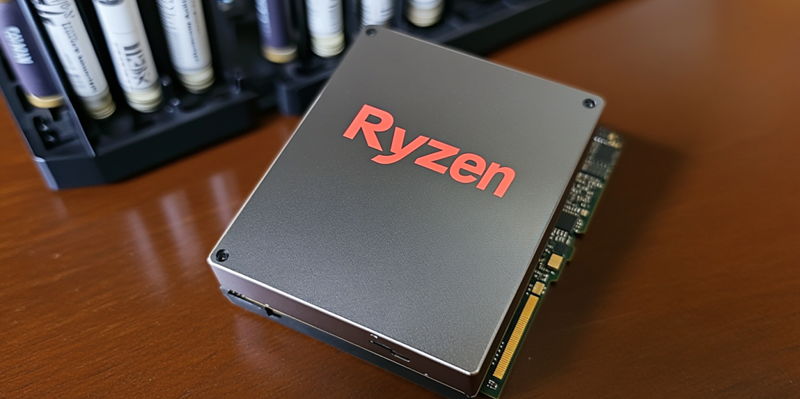In a rapidly evolving tech landscape, AMD continues to push the boundaries of high-performance computing with its latest processor, the AMD Ryzen 9 9950X3D. This upcoming flagship CPU is set to feature an impressive 16 cores and 32 threads, a configuration that is expected to deliver exceptional computational power. The processor comprises two Zen 5 CCDs, a next-generation architectural innovation that could mark a significant advancement over its predecessors. Notably, the Ryzen 9 9950X3D has already showcased its formidable capabilities in early testing, excelling in the Factorio benchmark where it achieved a remarkable 655 UPS. This performance not only outstripped its predecessor, the Ryzen 7 7950X3D, by up to 64%, but it also demonstrated an 18% improvement over the Ryzen 7 9800X3D, underscoring the potential leap in performance users can expect from this new chip.
Advanced V-Cache Capabilities and Overclocking Potential
One of the key specifications that sets the Ryzen 9 9950X3D apart is its substantial cache capacity. The CPU boasts 64 MB of L3 cache derived from the CCDs, supplemented by an additional 64 MB 3D V-Cache. Additionally, it includes 16 MB of L2 cache, culminating in a total cache amount of 144 MB. This enhanced cache architecture is pivotal in delivering the high-speed data access necessary for demanding applications and seamless multitasking. Further enhancing its appeal to enthusiasts and professional users, the Ryzen 9 9950X3D supports full overclocking as well as Precision Boost Overdrive (PBO) and Curve Optimizer (CO) tuning options. These features allow users to fine-tune performance to suit their specific needs, providing a level of customization that can be crucial for optimizing workloads and maximizing efficiency.
Predictions regarding the Ryzen 9 9950X3D also suggest it will incorporate clock speeds and Thermal Design Power (TDP) ranges that build upon the architecture of the Ryzen 7 9800X3D. Speculation points toward a TDP range of 120-170W, with potential for higher clock speeds owing to the 2nd Generation 3D V-Cache stacking technology. This advancement in stacking technology not only enhances performance but also aids in maintaining the thermal efficiency of the processor, ensuring sustained high performance without compromising stability. Such innovations underscore AMD’s commitment to delivering cutting-edge solutions that cater to the evolving demands of the high-performance computing market.
Market Impact and Competitive Edge
The anticipation for the official announcement of the Ryzen 9 9950X3D at CES 2025 is building, with its subsequent launch eagerly awaited. Industry analysts predict that this new processor will build on the success of its predecessor, the Ryzen 7 9800X3D. AMD is expected to position the Ryzen 9 9950X3D at a premium price, reflecting its superior performance and efficiency upgrades. Despite the higher price point, the significant advancements in processing power and energy efficiency promise to justify the cost. This strategy targets high-end users and professionals who want top-tier performance, setting a new standard in the industry.
Broadly speaking, the Ryzen 9 9950X3D showcases AMD’s unwavering dedication to innovation in CPU technology. With the integration of Zen 5 architecture and advanced V-Cache, this model is set to significantly enhance gaming and computing experiences. These advancements will reinforce AMD’s standing in the fiercely competitive high-performance CPU market, helping the company maintain its edge over rivals. The Ryzen 9 9950X3D is more than an incremental upgrade; it marks a substantial evolution in AMD’s product line, promising notable performance and efficiency improvements. The tech community eagerly awaits its launch, with the Ryzen 9 9950X3D poised to redefine high-performance computing, benefiting gamers, content creators, and professionals alike.

